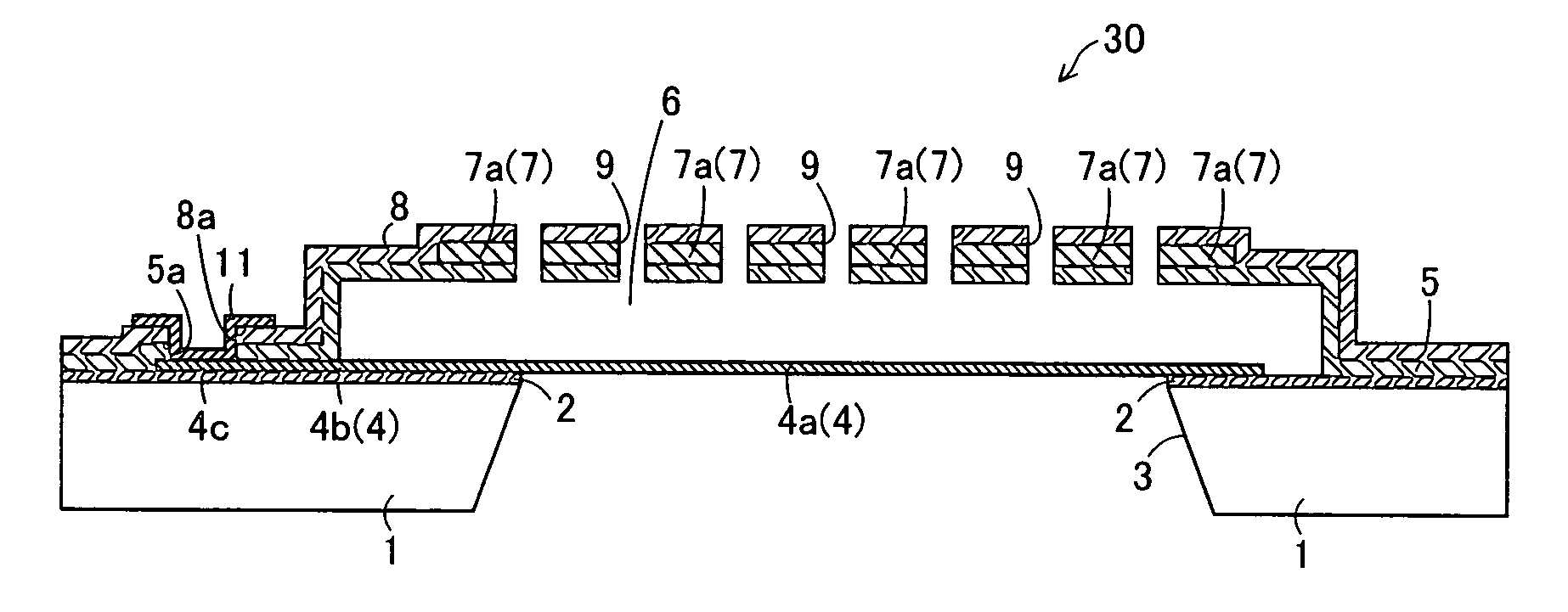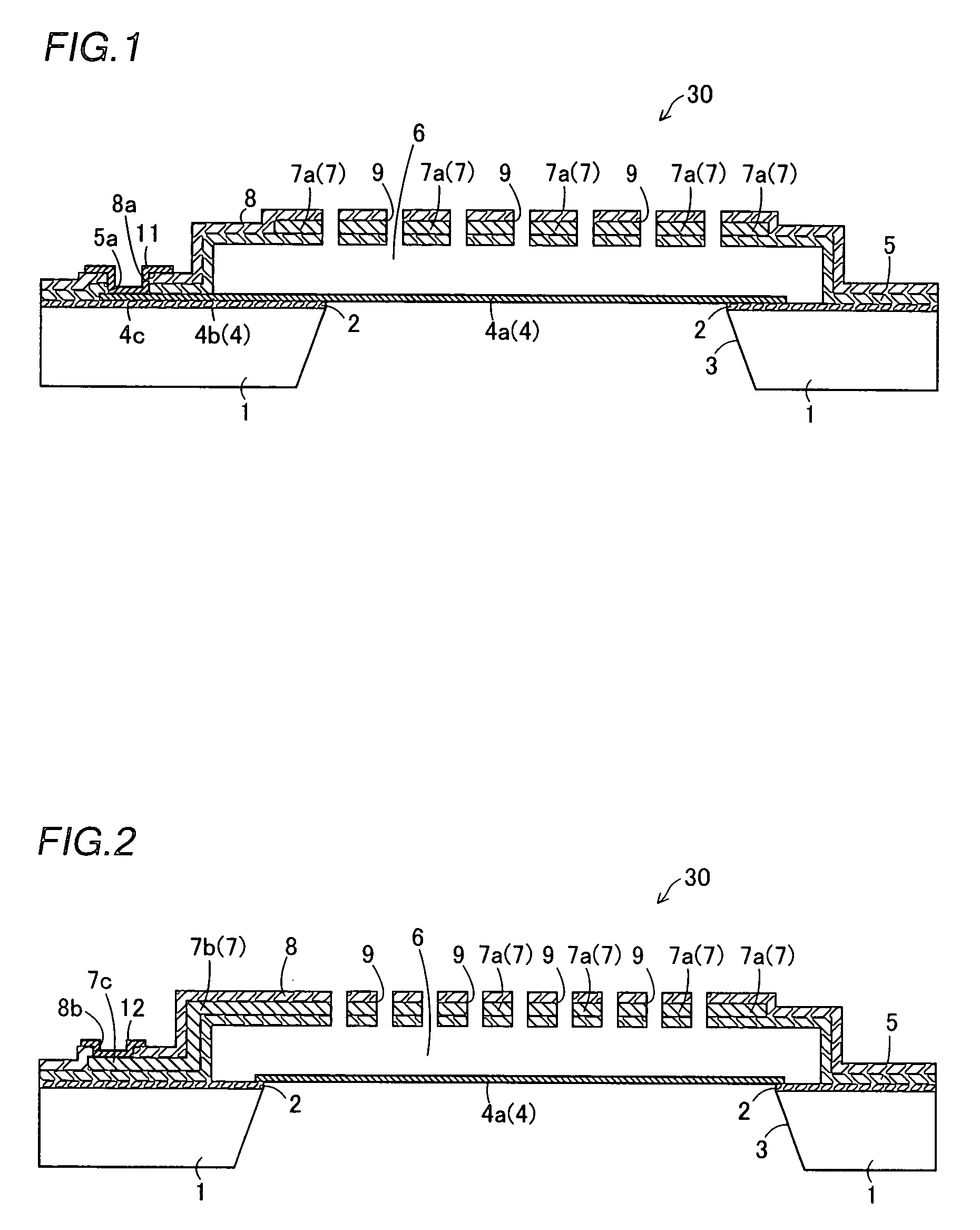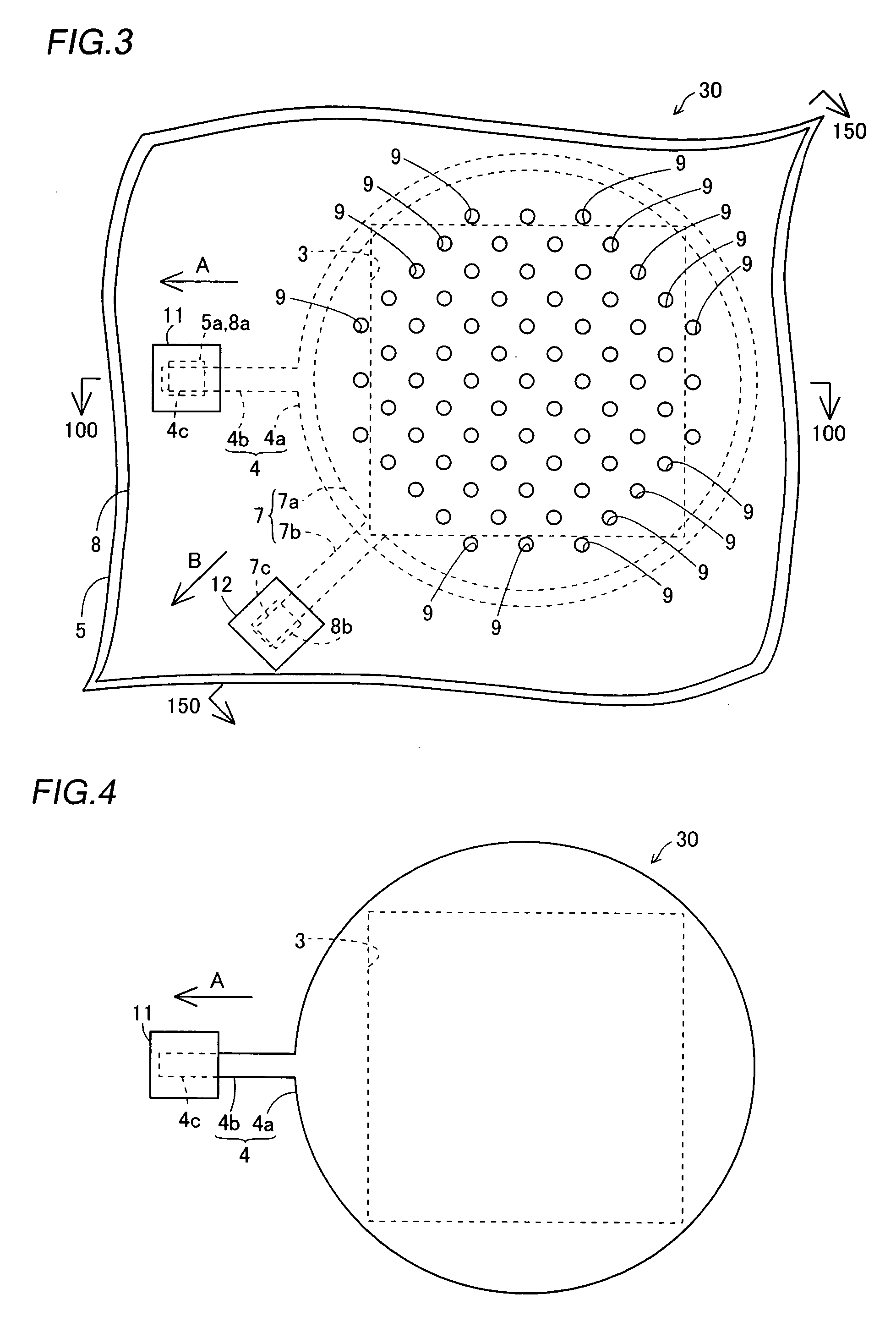Sensor
a technology of sensors and electrodes, applied in the field of sensors, can solve the problems of easy vibration of the electrode plate, and achieve the effects of reducing noise added to the pressure signal, facilitating electrical isolation, and reducing stress
- Summary
- Abstract
- Description
- Claims
- Application Information
AI Technical Summary
Benefits of technology
Problems solved by technology
Method used
Image
Examples
first embodiment
[0049] The structure of a microphone 30 according to a first embodiment of the present invention is described with reference to FIGS. 1 to 4.
[0050] In the microphone 30 according to the first embodiment, an etching stopper layer 2 of SiN is formed on the surface of a silicon substrate 1, as shown in FIGS. 1 and 2. This etching stopper layer 2 has a thickness of about 0.05 μm to about 0.2 μm. A partially square-pyramidal (truncated square-pyramidal) opening 3 (see FIGS. 1 and 3) is formed in a region formed with a diaphragm 4a described later, to pass through the silicon substrate 1 and the etching stopper layer 2. This opening 3 functions as an air passage when the microphone 30 receives a sound.
[0051] A polysilicon layer 4 having a thickness of about 0.1 μm to about 2.0 μm is formed on the upper surfaces of the etching stopper layer 2 and the opening 3. This polysilicon layer 4 is doped with an n-type impurity (phosphorus (P)), to be conductive. As shown in FIGS. 3 and 4, the pol...
second embodiment
[0089] Referring to FIG. 31, supports are formed not only on the upper and lower surfaces of an electrode plate portion 47a but also on the inner side surfaces of holes 47b of the electrode plate portion 47a corresponding to sonic holes 49 in a microphone 30a according to a second embodiment of the present invention, dissimilarly to the aforementioned first embodiment.
[0090] In the microphone 30a according to the second embodiment, the holes 47b larger than the sonic holes 49 are formed in the electrode plate portion 47a of a polysilicon layer 47 on positions corresponding to the sonic holes 49, as shown in FIG. 31. An upper support layer 48 is so formed as to cover not only the upper surface of the electrode plate portion 47a of the polysilicon layer 47 but also the side surfaces of the holes 47b of the electrode plate portion 47a. A lower support layer 45 is so formed as to cover portions of the polysilicon layer 47 located on the lower ends of the inner side surfaces of the hole...
third embodiment
[0100] A sonic sensor 300 according to a third embodiment of the present invention is described with reference to FIGS. 37 to 39. According to the third embodiment, modified SiOC layers 308a formed by ion implantation are employed as supports supporting electrode plates (fixed electrodes), dissimilarly to the aforementioned first and second embodiments.
[0101] As shown in FIGS. 37 to 39, the sonic sensor 300 according to the third embodiment comprises a vibrating electrode 304 constituting a diaphragm formed on a silicon substrate 301 and fixed electrodes 306 opposed to the vibrating electrode 304 and arranged at prescribed intervals. The vibrating electrode 304 and the fixed electrodes 306 constitute capacitors.
[0102] The sonic sensor 300 includes the silicon substrate 301, an etching stopper layer 302a, the vibrating electrode 304, a sacrifice layer 305, the fixed electrodes 306, sonic holes 307a, the modified SiOC layers 308a, a pad electrode 309a for the vibrating electrode 304...
PUM
 Login to View More
Login to View More Abstract
Description
Claims
Application Information
 Login to View More
Login to View More - R&D
- Intellectual Property
- Life Sciences
- Materials
- Tech Scout
- Unparalleled Data Quality
- Higher Quality Content
- 60% Fewer Hallucinations
Browse by: Latest US Patents, China's latest patents, Technical Efficacy Thesaurus, Application Domain, Technology Topic, Popular Technical Reports.
© 2025 PatSnap. All rights reserved.Legal|Privacy policy|Modern Slavery Act Transparency Statement|Sitemap|About US| Contact US: help@patsnap.com



